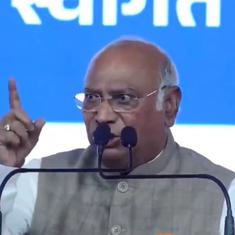The border stand-off in Doklam has predictably animated discussions in mainstream and social media in both India and China. For the most part, commentators and social media users are busy bolstering their respective side’s position even if it means being economical with the facts.
China’s English media is well known for whipping up hysteria over India, but the Chinese language media, though far less bellicose, is not immune to it either.
Take Huanqiu Shibao, the mothership of the pugnacious Global Times. After Sushma Swaraj asserted that the world community was with New Delhi on the Doklam dispute and that both India and China must withdraw from the region to ease the tension, the paper, in an editorial, accused the Indian foreign minister of lying to her country because it was India that had illegally entered Chinese territory.
The paper also reminded India that its “inferior military strength” was no match to the People’s Liberation Army.
On July 7, Xinhua News ran an article “demystifying the truth” about the stand-off. It maintained, among other claims, that India has illegally entered Chinese territory on the pretext of protecting Bhutan. It lamented that New Delhi has made Doklam a disputed territory even though it has always belonged to China, referring to Thirty Six Stratagems, a set of Chinese military directives that lists “creating something out of nothing” as a key strategy of warfare. Further, the contentious road that Beijing is building in Doklam is within its own territory, the article asserted, so it cannot be a threat to India’s security.
Such articles, of course, omit or distort facts. For one, the Chinese media has not cared to inform its readers that China and Bhutan have signed agreements, in 1988 and 1998, to keep peace on the border until the boundary is settled for good. The two countries have also agreed to maintain the status quo on the border, including the Doklam plateau, as it existed before March 1959. In essence, the Chinese media should acknowledge that the region is disputed and give space to the opposing views as well.
Amplified on social media – including Weibo, the Chinese equivalent of Twitter which has over 340 million users, and WeChat, a sort of a hybrid of WhatsApp, Facebook and Paytm with close to 889 million users – the distorted views might come to dominate the discourse about India.
Mega platform
Shared on Weibo, the Xinhua article was read more than 65,000 times. It was then re-posted by Renmin Ribao and other major media outlets such as Guancha and circulated by influencers like the Central Committee of Communist Youth League, whereby it was read over 11,00,000 times.
Renmin Ribao had earlier posted this take on the Doklam deadlock on Weibo and WeChat: @India, borderline is the bottom line. It later became the title of a commentary published on Xinhua that was widely discussed in India. The post was re-posted 1,16,537 times, liked by 3,08,197 people and attracted 54,760 comments on Weibo. On WeChat, the post was viewed over 1,00,000 times and received 29,464 likes.
The Weibo commentators generally dismissed the likelihood of India and China going to war. One even questioned the wisdom of unnecessarily provoking India as it could be detrimental to China’s Belt and Road Initiative and other efforts for peace and development in the region. Most, however, believed that India had intentionally violated the agreed border in Doklam because it felt threatened by China’s rise as a global power.
On the other side of the opinion spectrum is the WeChat blog Global Military Focus. In an article titled “Important inside story: How many people know the truth about China-India Doklam Conflict?”, published on July 14, it sought to “clarify many facts” about the stand-off. China has held Doklam area no longer than since 2007 and before that it was under Bhutan’s control. This is objective fact, the article stated. China claims that the disputed land has always belonged to it, the article questioned, then why does it not clarify when it established control in the region?
The article, which has been read more than 84,782 times so far, also emphasised that the 1890 Tibet-Bhutan border treaty was not clear. For one, the watershed principle and ownership of mountains ridges was open to interpretation.
The people of China and India could do with more such nuanced articles on the Doklam stand-off in the media, mainstream or social.
Rajiv Ranjan is assistant professor at the Shanghai University’s College of Liberal Arts.










